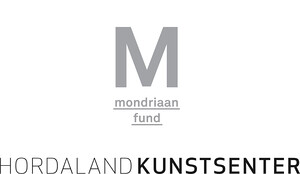Road to Victory
January 27–April 9, 2017
Klosteret 17
5005 Bergen
Norway
Hours: Wednesday–Saturday 12–5pm
hks@kunstsenter.no
From January 27 to April 9, 2017 Hordaland Art Centre (Hordaland Kunstsenter) hosts a solo exhibition by Antonis Pittas titled Road to Victory. The exhibition emerged out of the art centre’s collaboration with Pittas and Mousse Publishing on the forthcoming book by the same name, which is a conceptual publication that extends Pittas’s artistic practice as well as an anthology of essays reflecting on his work and its various contexts. Together the book and exhibition present an artist-initiated re-reading of the seminal work of exhibition designer, Herbert Bayer, whose 1942 exhibition Road to Victory at the Museum of Modern Art in New York presented a highly aestheticised and celebratory representation of the American involvement in the Second World War.
In revisiting this moment in the history of exhibitions, Pittas draws our attention to the embedding of propagandistic elements in artistic display conventions, ranging from the Russian avant-garde to the contemporary moment. Bringing into constellation a history of affect and abstraction in the exhibition space, the Road to Victory project brings together archival fragments, spatial transformations, new sculptural works, and textual contributions by a host of acclaimed authors. Each component is integral to the entire project, and intentionally sustains the suggested relationships between economic, historical, political and aesthetic trajectories.
In Road to Victory Pittas transforms Hordaland Art Centre’s gallery space into a field of black surfaces, objects, sculptures and text works that draw the exhibition visitor into a tactile system in which value, performativity and material history are contested. Pittas reminds us that our sensory vocabularies are infused with ideology. Politics lives in the matter of art, in its ability to mean, even as aesthetic and artistic tastes are inevitably influenced by political feelings.
Pittas states:
“In the course of my artistic career, I have increasingly become intrigued by the question of how past and present relate to and reinforce each other… For me, being a Greek who is living in the Netherlands, the EU (and worldwide) economic crisis and the situation in my home country are a special point of interest. In the past, I have worked with this background and related it to the original promises of modernism and ‘the new,’ the hope for better times, the consequences of international monetary policies, the question of value, the function of (public) space and the role of the artwork as a commodity object. I play with the tensions between monumentality and ephemerality—very present in the Greek artistic heritage—and the theatricality of destruction, decay and violence, as well as its various symbolisms.”
Road to Victory is the first iteration of Hordaland Art Centre’s 2017 programme titled After Exhibitions, which considers the possibilities for contemporary art in an era that does not necessarily take the primacy of the exhibition format as a given. With this in mind, many of our new commissions and events in 2017 deviate from the exhibition format, which has been the lynchpin of Hordaland Art Centre’s programming since its inception in 1976. However, to deviate from the exhibition entirely is not sufficient to question the values embedded in its modes and sociology—the format itself needs to be inspected, or self-inspected, as well.
About Hordaland Art Centre
Hordaland Art Centre is Norway’s oldest artist-led institution for contemporary art. Founded in 1976, the centre’s programme is committed to producing and showing art free from the pressures of the market. To this end, we focus strongly on commissioning and supporting the production of new work. Our programme includes exhibitions, residencies, publishing, art in public space, as well as artistic projects that take other or unforeseen forms.
About Antonis Pittas
Antonis Pittas (Greece/Netherlands) lives and works in Amsterdam. He mainly creates context-sensitive installations, informed by architecture, art-historical references, the performative aspects of installation art, and its social dynamics.
This project is supported by The Mondriaan Fund and Bildende Kunstneres Hjelpefond.


